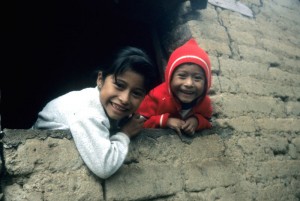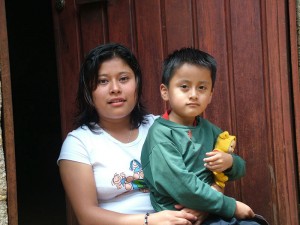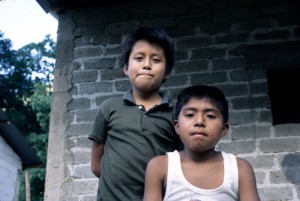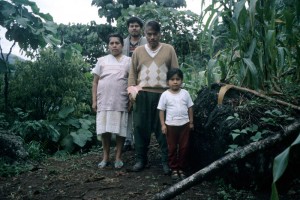Mazatec Project
The Mazatec Project began in 1995. On semi-annual fieldwork to Northern Oaxaca and Southern Puebla, Mexico, Kathleen Harrison studies traditional and contemporary applications of plants and mushrooms that are used in Mazatec daily life, by midwives in birthing, for nutritional and symbolic food, in religious ritual as offerings and tools, and in the shamanic healing and prayer ceremonies led by curanderas and curanderos, or healers. All of the subjects and informants in this project are indigenous Mazatec Indians of the Sierra Madre Oriental. Over the past decade she has worked with a number of fine native collaborators. The primary curandero who she visits has children and grandchildren who have followed modern paths and lures to the lowlands, from their remote mountain villages. Most of these families are supported by single mothers, whose husbands have died, disappeared, or have been imprisoned without trial (the fate of most Indians in the Mexican judicial system).
Kat visits the spectrum of families, who have become her dear friends. She does what she can to help, and documents the changes in their lives and how they think about the world, while continuing to expand her understanding of their natural medicines. Kat has a Mazatec god-daughter whom she has assisted for years now by paying for her education: Rosalba is the first in the history of her extended family to finish her secondary education, and she even went on to one year of university. Certain donors who particularly value this line of Botanical Dimensions’ work make contributions to the Mazatec Fund. Kat speaks at conferences and schools about the Mazatec worldview, their ritual use of mushrooms and plants, and their adaptation and transformation under the pressure of 21st century conditions.
Kathleen’s daughter, professional photographer Klea McKenna kleamckenna.com, has also traveled several times to visit the Mazatecs and produces an ongoing photo-essay of the life of one branch of the family that is learning to survive in the city. Hers is also a continuing study, mostly of young Mazatec females as they change from girls into women, from participants of rural native belief systems into practicing Catholics, and as they are assimilated into the indigenous urban poor.
Kat visited the Mazatecos again in early 2010, to meet her newborn godson, and bring him to meet his 86-year old grandfather in the mountains. This is the respected curandero whom she’s been working with for 15 years; he speaks only Mazatec, not Spanish. Kat was able to interview him on video with translation into Spanish by his adult granddaughter; they asked him questions about his beliefs and practices in his work with plants and spirits.








